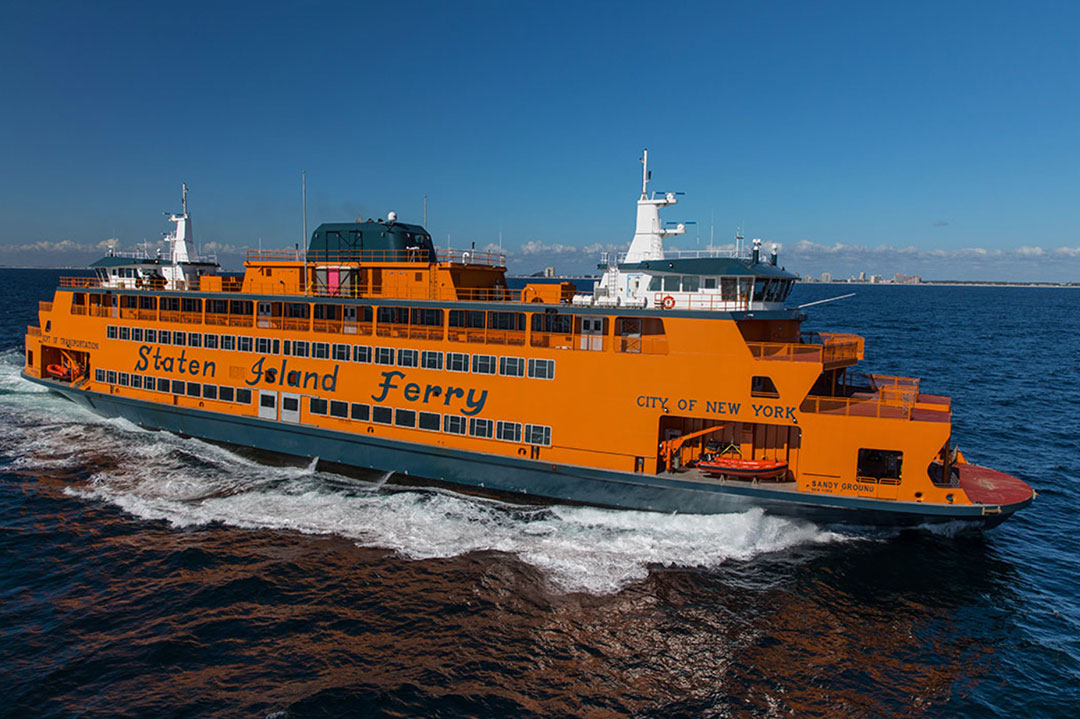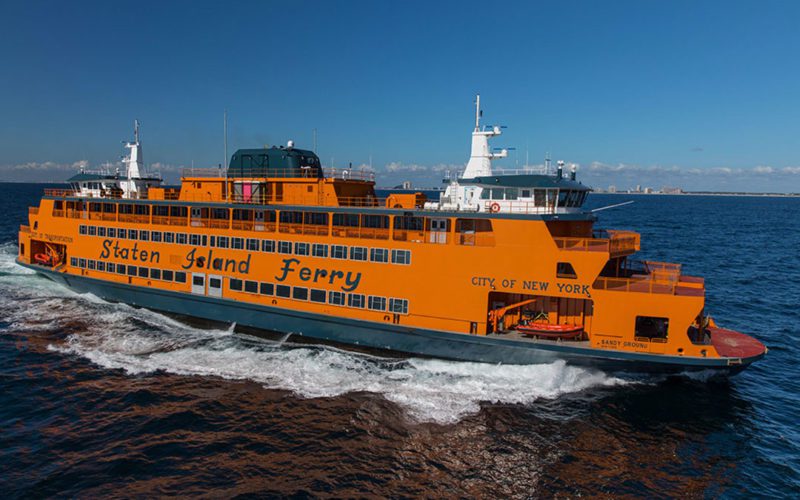
Five people suffered minor injuries when the Staten Island Ferry vessel Sandy Ground caught fire while underway from Manhattan to the St. George Terminal on Staten Island.
The fire started at about 1700 on Dec. 22 as the ferry transited the Upper Bay of New York Harbor. There were 866 passengers and crew on board at the time of the fire, which crew confined to the engine room.
Some passengers disembarked to other ferries that responded to the anchored ship, while others remained on the ferry until it reached St. George Terminal under tow.
Crew used the vessel’s fixed Novec 1230 engine room fire suppression system to extinguish the flames, according to John Garvey, chief operating officer of the Staten Island Ferry, which is a division of the New York City Department of Transportation.
“All the safety systems on board worked,” Garvey said during a press briefing soon after the fire. “We don’t know the reason yet for the fire. We are going to wait for the Coast Guard to make its determination.”
The U.S. Coast Guard declined to comment on the incident or answer basic questions about its response beyond what it shared in a news release.
The $85 million Sandy Ground was commissioned in early 2022. It is the second of three 320-foot Ollis-class ferries built by Eastern Shipbuilding for the Staten Island Ferry service. The other two vessels in the series are lead vessel SSG Michael H. Ollis and Dorothy Day, which was delivered last fall.
All three Ollis-class ferries are powered by four 2,495-hp EMD Tier 4 engines driving a single Voith Schneider propeller on each end. Electrical power comes from three Caterpillar C18 gensets.
As of early January, there was no indication from the Coast Guard that either the main engines or the generator sets were the source or origin of the fire. The service has not shared details about the fire itself.
Ferries from NY Waterway and NYC Ferry came alongside Sandy Ground in the Upper Bay and embarked an unknown number of passengers. Tugboats came alongside Sandy Ground and held it in position during the passenger transfer. They later towed the ferry to Staten Island, where the remaining passengers got off.
Specifics about the passenger transfer were not available. The names of the assist tugs could not be found.
Crew handed out life jackets to passengers during the episode. Injuries sustained by the passengers and crew were described as minor. Two crewmembers were treated at local hospitals.
First responders praised the Staten Island Ferry crew for their response to the fire below deck and their handling of hundreds of passengers above it.
“The crew of the vessel was very quick to act and they acted appropriately by notifying the Coast Guard of an emergency on board,” said Frank Leeb, deputy assistant chief for the New York Fire Department.
“They were also very quick to make sure they sealed the engine room and evacuated the area and followed the protocol” around the use of its fixed fire suppression system, Leeb continued.
Garvey said crews drill weekly to ensure they are ready in the event of an emergency. Reached by email, he declined to comment further during the ongoing investigation. •

